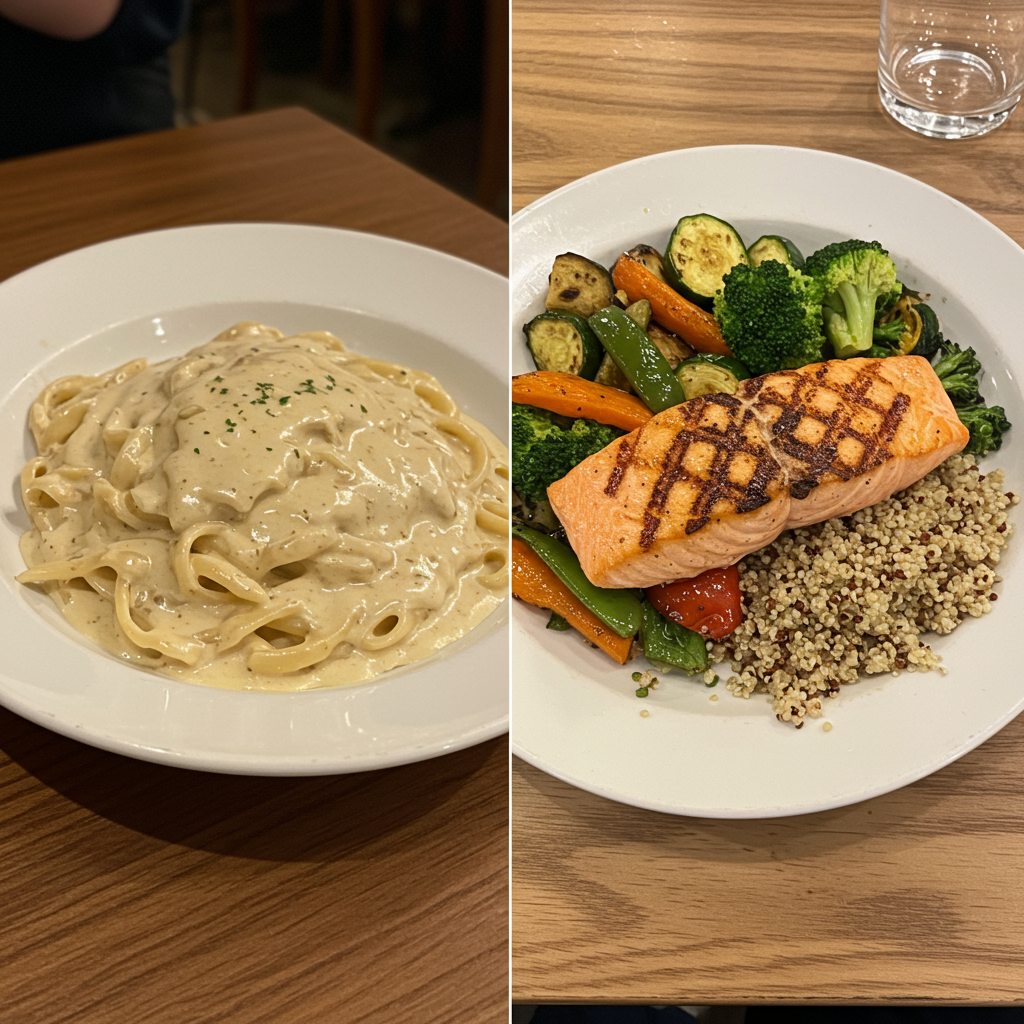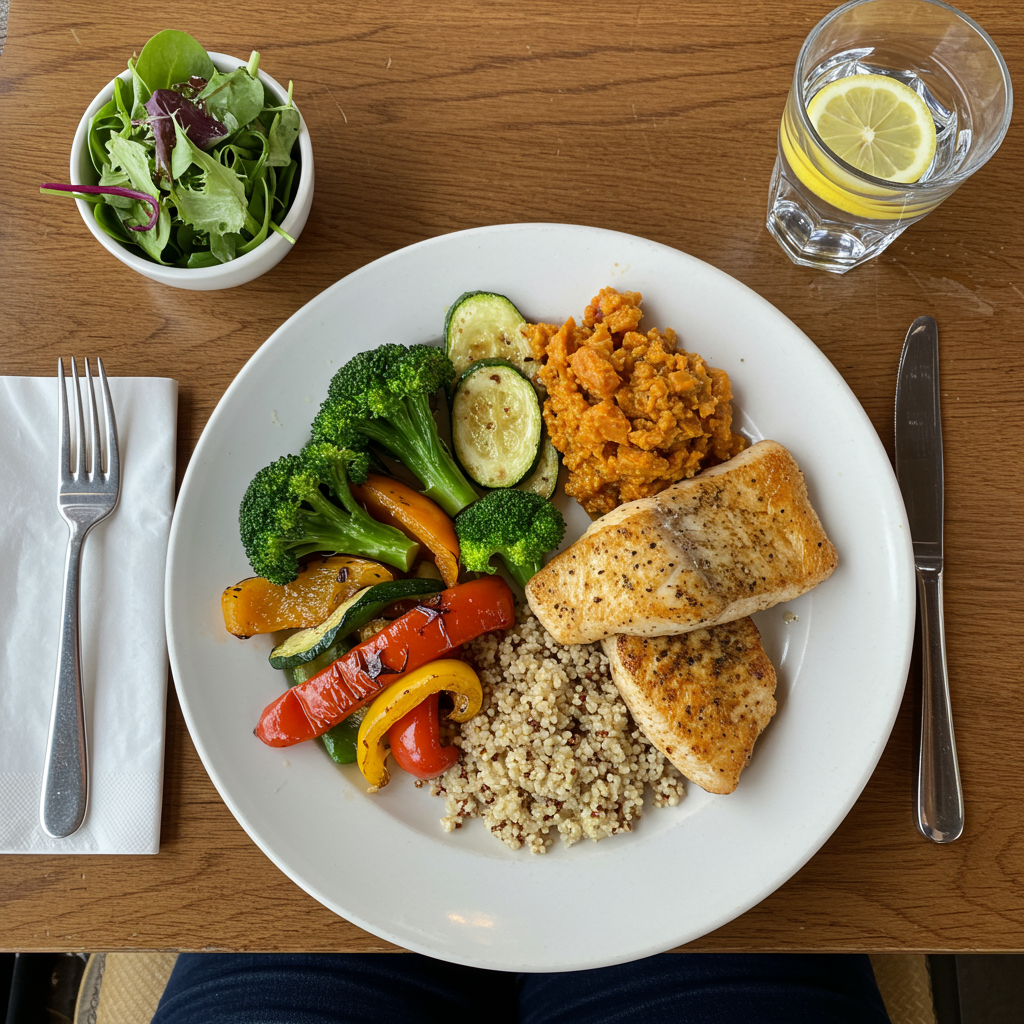Navigating Restaurant Menus: Your Guide to Blood Sugar Balance When Dining Out
Eating out is one of life's pleasures, but for those of us mindful about blood sugar levels, restaurant meals can feel like navigating a metabolic minefield. The good news? With some strategic choices, you can enjoy social dining while keeping your glucose levels stable and your health on track. As someone who's spent decades helping patients reverse diabetes and insulin resistance, I've developed practical strategies that work in real-world settings—no need to avoid restaurants or feel deprived.
The Hidden Blood Sugar Disruptors in Restaurant Foods
When you sit down at a restaurant, you're often unwittingly faced with what I call the "blood sugar triple threat":
First, portion sizes at most establishments are significantly larger than what we need, often containing 2-3 times the carbohydrates your body can effectively process in one sitting. Second, restaurant meals typically combine refined carbohydrates with industrial seed oils and excess sugar—a combination that spikes insulin and promotes inflammation. Third, the pace of restaurant dining often encourages faster eating, which doesn't give your satiety hormones time to signal fullness.
Consider this: A typical restaurant pasta dish can contain up to 100-150 grams of carbohydrates in a single serving—the equivalent of eating 10-15 teaspoons of sugar! Your body simply isn't designed to handle this carbohydrate load, especially when consumed quickly and combined with inflammatory oils.

Pre-Game Your Restaurant Visit: The Success Strategy
The key to dining out successfully lies largely in what you do before you even arrive at the restaurant:
Research the menu in advance: Most restaurants post their menus online. Take 5 minutes to review your options and mentally select blood sugar-friendly choices before you arrive. This prevents decision fatigue and reduces the temptation of less healthy options when you're hungry.
Consider a pre-meal protein snack: Having a small protein-rich snack (like a handful of nuts or a hard-boiled egg) about 30 minutes before your restaurant visit can help blunt potential glucose spikes by activating your satiety hormones early.
Schedule strategically: If possible, time your restaurant meals earlier in the day rather than late evening. Your insulin sensitivity naturally decreases as the day progresses, making late-night carbohydrates more problematic for blood sugar control.
Hydrate before you go: Drinking 16 ounces of water before your meal helps with satiety and supports proper digestion. Add a tablespoon of apple cider vinegar to your pre-meal water for an extra blood sugar-stabilizing boost (research shows this can reduce post-meal glucose spikes by up to 30%).
Smart Ordering: Your Restaurant Playbook
Once you're at the restaurant, implement these proven strategies:
Lead with fiber and protein: Begin your meal with a non-starchy vegetable appetizer or a clear broth-based soup. This activates stretch receptors in your stomach, signaling satiety before the main course arrives.
Use the plate method: Mentally divide your plate and fill half with non-starchy vegetables, one-quarter with clean protein, and the remaining quarter (if any) with lower-glycemic carbohydrates like sweet potato or quinoa.

Make strategic substitutions: Don't hesitate to request modifications:
- Ask for double vegetables instead of rice or potatoes
- Request olive oil and vinegar instead of commercial salad dressings
- Swap bread for extra greens or a side salad
- Ask for berries instead of higher-sugar dessert options
Practice the fork technique: Place your fork down between bites and focus on chewing thoroughly. This mindful eating practice slows consumption, improves digestion, and gives your brain time to register fullness.
Consider a digestive walk: If possible, take a 10-15 minute walk after your meal. Research shows this simple practice can lower post-meal blood glucose by up to 22% compared to remaining seated.
The Mindset That Makes It Sustainable
The most important aspect of dining out successfully is maintaining a mindset of abundance rather than restriction. Restaurant dining isn't about perfect blood sugar control—it's about making choices that allow you to enjoy social connections while honoring your health.
Remember that one meal doesn't define your health journey. If you find yourself at a special celebration or a restaurant with limited options, focus on enjoying the experience mindfully, then return to your blood sugar-balancing habits at the next meal.
By implementing these strategies consistently, you'll find that dining out becomes less of a metabolic challenge and more of what it should be—an enjoyable part of a balanced, health-promoting lifestyle. Your body has remarkable resilience, and with these practical approaches, you can navigate restaurant dining while keeping your blood sugar—and your health—on track.

References:
Shukla AP, Iliescu RG, Thomas CE, Aronne LJ. Food Order Has a Significant Impact on Postprandial Glucose and Insulin Levels. Diabetes Care. 2015;38(7):e98-e99. doi:10.2337/dc15-0429
Reynolds AN, Mann JI, Williams S, Venn BJ. Advice to walk after meals is more effective for lowering postprandial glycaemia in type 2 diabetes mellitus than advice that doesn't specify timing: a randomised crossover study. Diabetologia. 2016;59(12):2572-2578. doi:10.1007/s00125-016-4085-2






